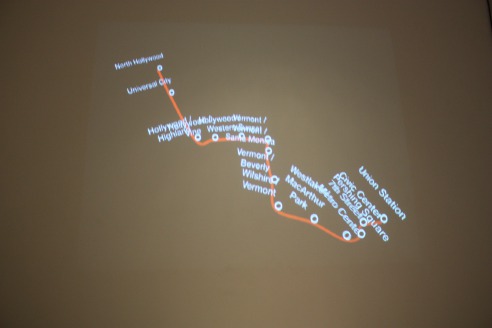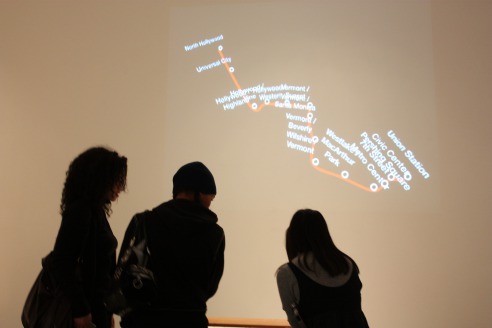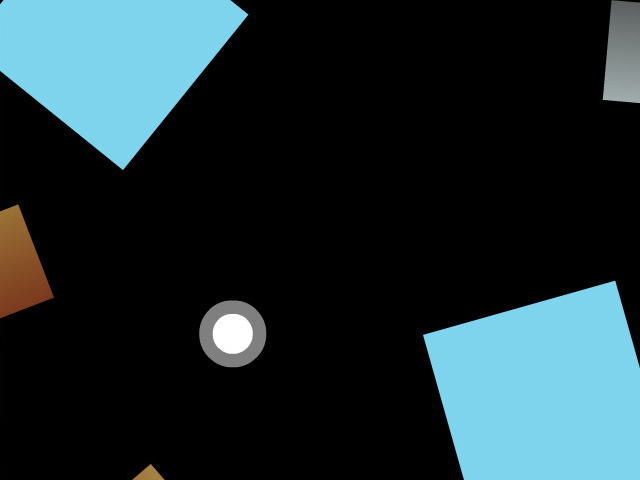ZYO-HA-KYU
HARMONY - multiple sounds being noticed at the same time - John Cage
Zyo-Ha-Kyu is a game for musical meditation. 1 player controls an abstract virtual world which generates a musical score as a side effect. 3 players play this musical score on pseudo-spiritual instruments. The "performance" of these players feeds back into player 1's world. If everyone does everything right, then the game will end with silence.
Demonstration Video
This video tries to make it easier to understand what is happening. There is also some audio to give an idea of what the game sounds like.
This video documents the only live performance. Unfortunately there was a camera malfunction and the video appears choppy. Nonetheless, it gives a rough idea of what Zyo-Ha-Kyu is like in a live performance.
Liner Notes
ZYO - introduction
HA - development or exposition
KYU - rushing to the end
∞ The system.
A system for cooperative musical mediation for three students and one teacher.
A system for spontaneous musical composition and performance for three musicians and one composer.
This system is made up of three main components. The first is an interface for composing music. This composition is fed in realtime to the second component which is a visualizer of this composition. This dynamic musical score will be played on the third component, which is a set of real musical instruments/sound makers. The performance by the musicians affects the composer. The goal is to meditate and clear your mind.
The system is realized in Processing/Java, and Actionscript 3. The musical
instruments are interfaced with an Arduino board. The two applications
communicate with OSC (Open Sound Control) with a FLOSC (
http://benchun.net/flosc/).
//////////////////////
∞ The Five Natural Elements: Wood, Fire, Earth, Metal, Water.
Everything in the Universe is said to be created from the five elements, and all change is caused by changes in the power of these elements. The seasons, directions, nations, colors, and other phenomena are associated with the natural elements. In Music, the system of pitch and scale is explained in terms of them.
In the oldest book on music in Japan, Kyokunsyo, in the section Kargemonogatari (a story of wind and string instruments), Autumn is related to Kyo Zyo, sound of metal, and color white. Itikotu Tyo is the center , the sound of the earth, yellow, and light purple.
February 2008
Materials: Arduino, Contact Microphones, Eletret Microphones, DIY Instruments, Processing, Flash, Box2d



























